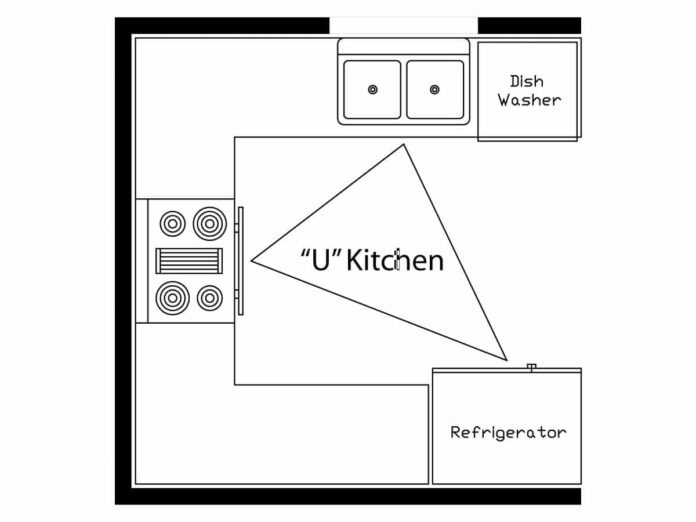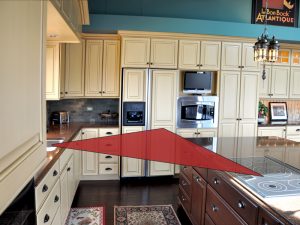You find yourself required to give some thought to the kitchen. Maybe you have your own place for the first time, or perhaps you are about to embark upon your first-ever kitchen remodel. What do you need to know?
You’ve heard about the Kitchen Work Triangle, but have you ever really understood its philosophy?
Understanding The Philosophy of Kitchen Work Triangle
With its roots dating back to the 1920s, the KWT’s main points are the cooktop, the sink, and the refrigerator. By keeping the three in close proximity, the ability of a single cook is maximized.
Typically, the space between these areas is no less than four feet and no larger than nine, adding to a total sum approximating between thirteen and twenty-six feet.
The idea is that a smaller area will be too cramped, while a larger area would result in unnecessary personal energy expenditure. The KWT is all about efficiency.
With a proven formula, it is perfectly reasonable to suggest that you always consider the KWT when designing your kitchen. When implementing the relatively easy guidelines, you’ll learn that cooking is much easier and traffic minimal.
Do you currently find your efforts in the kitchen stifled? Is it as though you are running back and forth? Determining the pitfalls specific to you is the first step toward resolution.
There are many aspects to consider—does your kitchen space serve a variety of purposes, perhaps even those beyond the realm of daily culinary tasks?
It is common for today’s kitchen to house an island, a variety of sinks, and a dining area that also may serve as a homework station… This is why confining your cooking area is important; it allows FREE USE of the remaining space!
Knowing that all sides of your triangle don’t need to be equal may be useful. More vital is keeping the paths between each point clear.
A triad’s shape may vary, and that’s acceptable but sometimes inevitable. You should keep kitchenware (utensils, pots, etc.…) near the stove. But outside the equation, a prep space should be established.
Small designated areas by the sink and stove are adequate. You may even implement a second triad between the pantry, refrigerator, and tableware. Connecting both triangles at the fridge may provide a more skillful kitchen solution.
Another option is to have the cooktop and sink on the same side, about three feet apart. This will enable you to watch what’s cooking while you wash and prepare other ingredients.
Some people prefer to leave the refrigerator accessible at all times, so the person at the range and anybody else who needs something from it is uninhibited. In this case, the triangle may be skewed so as not to conflict with the cook.
In simplest terms, the Kitchen Work Triangle connects from the center of the sink to the center of the cooktop, to the center of the refrigerator, and back to the sink.
All other stations are located nearby. We hope this insight is helpful. The goal is to get the most out of your kitchen and ease your daily routines. Despite some minor modifications, the KWT has been popular for nearly 80 years, proving the old proverb, “If it ain’t broke, don’t fix it!”












